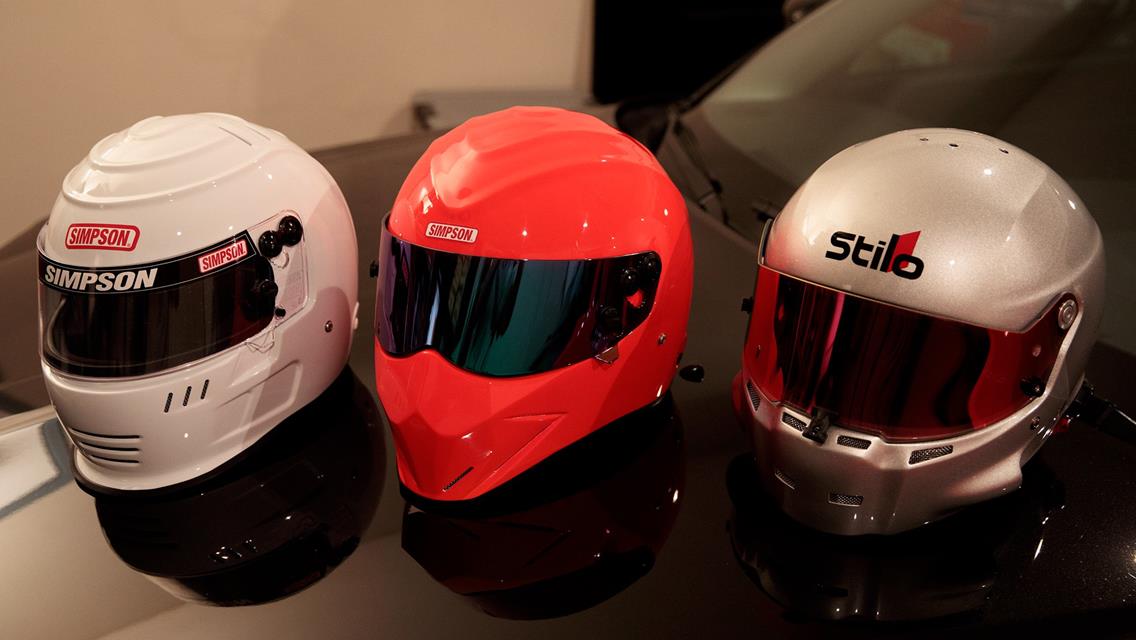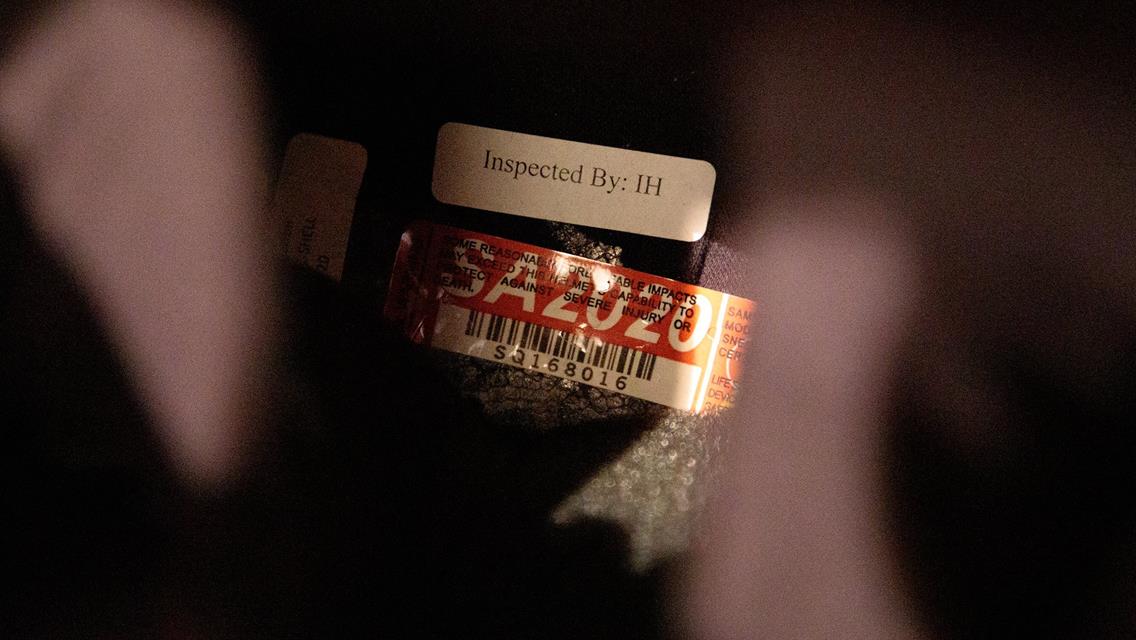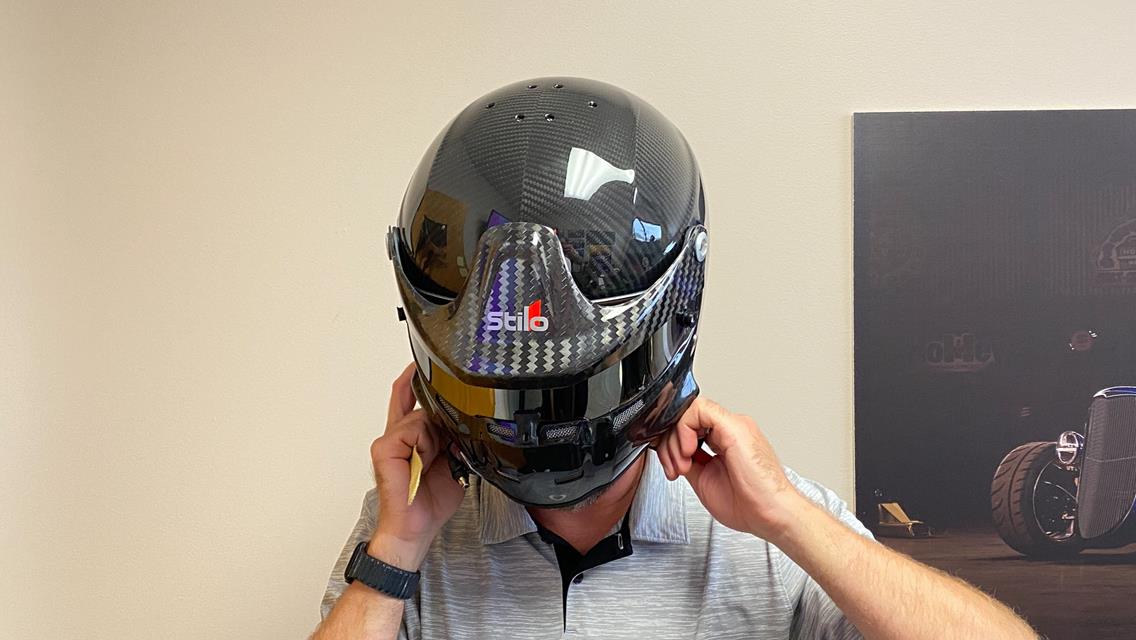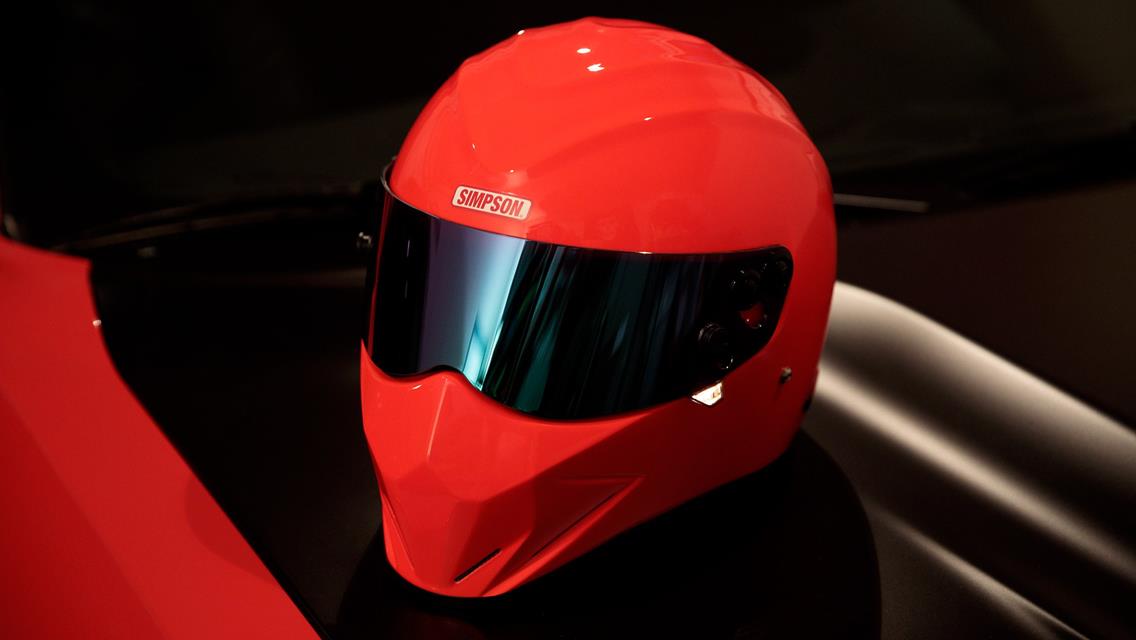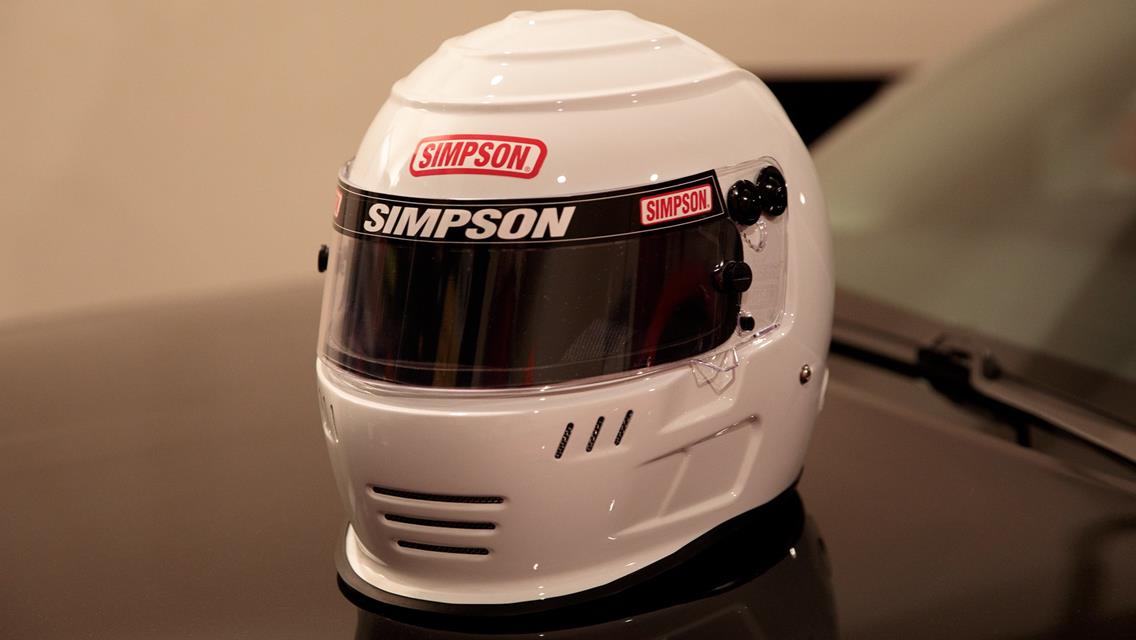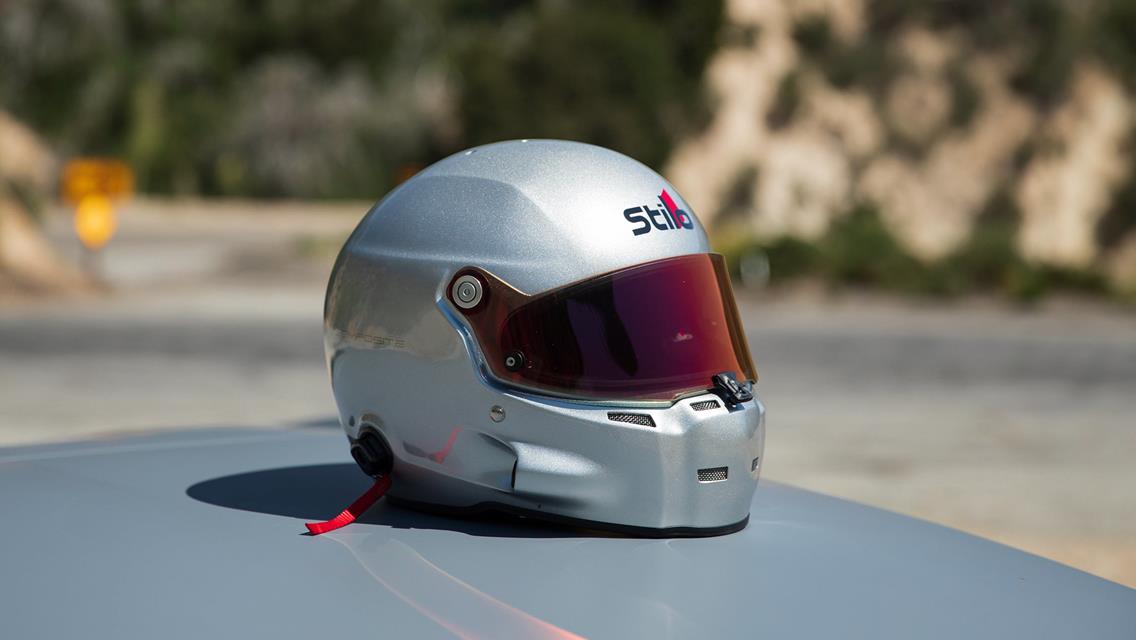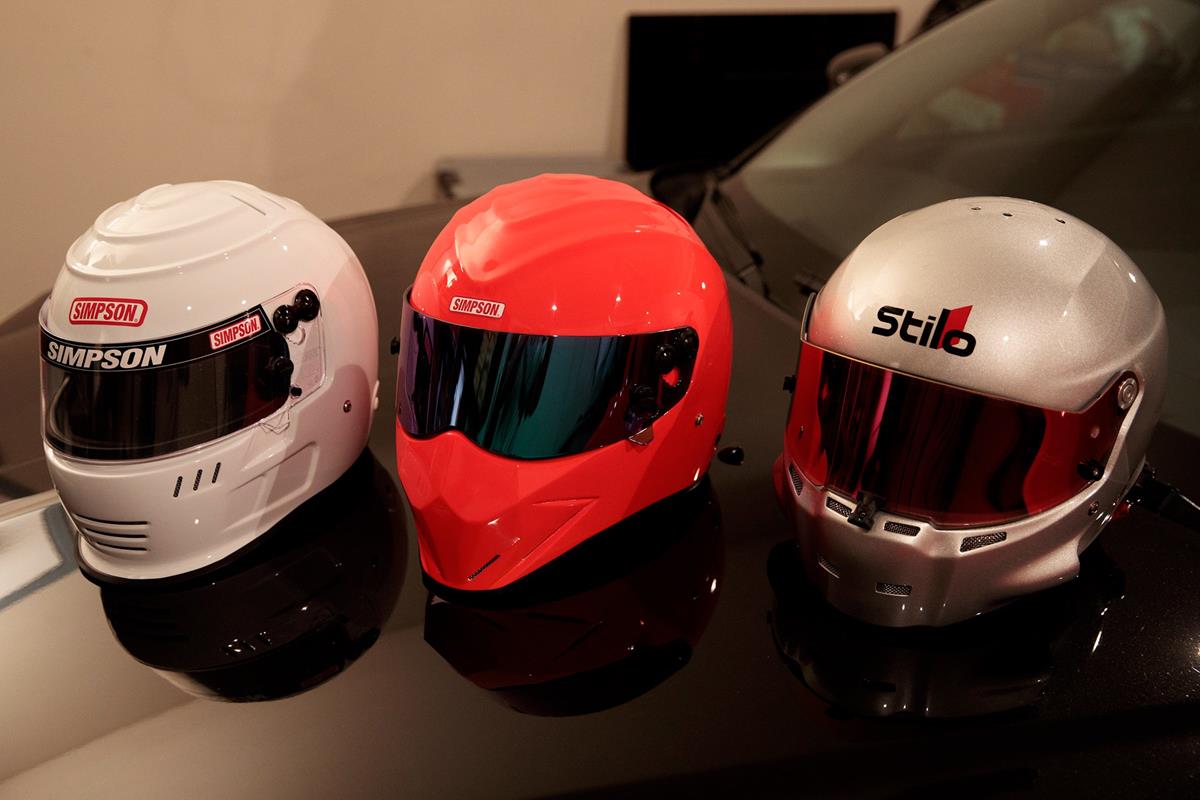

7/1/2022
HOW TO: CHOOSE THE RIGHT RACING HELMET FOR YOUR NEEDS
Whether you’re chasing lap times, drag racing, or mixing it up in wheel-to-wheel competition, there’s no getting around the fact that you’re going to need a helmet in order to participate in organized motorsports. It can be tempting to de-prioritize safety equipment over investments that add horsepower or enhance grip, but at the end of the day, getting the right gear is not only going to make it easier to drive the car, it’s also going to help ensure that you’ll be around to race another day if things go wrong.
But with the myriad of options out there, figuring out what you need when it comes to full-face, Snell-certified auto racing helmets can be kind of a daunting task. With that in mind, we’re taking a deep dive into the particulars with Jay Braxton of Simpson Performance Products to get the low-down on what to look for when it’s time for an upgrade.
CERTIFIED TO RACE
The vast majority of sanctioning bodies in the U.S. require a Snell safety certification in order for a helmet to be eligible for use in competition, and the most current rating changes every five years. With the recent change over to the SA2020 certification – which brings the latest Snell-rated helmets closer in line with the FIA’s 8859 standard – helmets with a certification of SA2010 or earlier have now effectively expired and thus cannot be used for racing anymore. But Braxton points out that the Snell rating isn’t the only factor to consider when deciding whether or not you should replace an aging helmet.
“In terms of safety, there can be a big difference between one helmet and another even if they’re both made of the same material and meet the same safety standard. They might both have the same sticker inside, but all that’s telling you is that they both met a minimum requirement. One helmet might’ve tested just good enough to pass that requirement, while another might have exceeded it significantly. Some people think it’s just the bells and whistles that factor into the cost of a helmet, and that’s not always the case.”
Helmets also tend to degrade over time with use, regardless of how much physical abuse they’re put through. “I always recommend that a helmet be replaced every five years,” Braxton tells us.
“Most sanctioning bodies will allow a helmet to be used for up to ten years from the Snell certification, or in the case of an FIA 8860 helmet, ten years from the date of manufacture. And the reason for that is because, if they didn’t have some kind of time limit, people would use their helmets until they were totally falling apart. But I recommend replacing a helmet every five years because sweat and hair products will break down the EPS liner on the inside of the helmet over time, and that expanded polystyrene liner is the layer of a helmet’s three-piece construction that does the majority of the work in terms of energy absorption in an accident. And you can’t tell what that EPS liner looks like by just eyeballing a helmet.”
GETTING THE RIGHT FIT
Braxton says that the fit is undoubtedly the most important aspect to consider when selecting a helmet. “The most expensive helmet in the world is not going to do what it’s designed to do if it does not fit the driver properly. I would rather see a driver using a well-fitted less expensive helmet than a poorly-fitted one that costs more.”
Ideally, a helmet should fit the crown of the head snugly, but not so tight that it will cause a headache or create pressure points on different parts of the head above your eyes. “That should be your primary concern,” Braxton says. “Next would be facial fit, and this is more about driver comfort. It shouldn’t be loose on the face, but you’ll also see some F1 drivers looking like they’ve got their face stuck in a bus door because they want it really tight around the face. In an open cockpit car, the faster you go, the more of a chance there is for the helmet to want to lift off of the driver’s head.”
In order to get the fit right from the get-go, you need to start off with a proper head measurement. “You wouldn’t buy a tuxedo without being measured for it, and that rule applies here, too,” says Braxton. “You’d be amazed how many people just plop helmets on and judge the fit by how easy it is to take it on and off. They think it’s supposed to be a little bit loose, but it’s not. It’s supposed to be snug, and you have to remember that the bottom of the helmet is smaller than the top of it, so it should require some effort to put it on. I normally have to reach up and push my ears back up when I put on a helmet that fits right.”
Beyond certification and fit, there’s also a number of other considerations to make when choosing between various options. Using these three different composite, full-face, SA2020-certified helmets from Simpson and Stilo as examples, we’re going to dig a bit deeper into the details to provide some insight that should help you determine what’s going to work best for your particular use-case.
SIMPSON DIAMONDBACK
“As with the other two we have here, this particular helmet uses a composite shell in its construction, but it’s also available in carbon fiber for those looking to reduce some of the weight,” Braxton explains. “The Diamondback design is an evolution of the Simpson Bandit, and it’s a bold look – it definitely stands out in the crowd because of that large chin bar and the contoured eye port. Because of that distinctive shape, this is a helmet that’s geared more toward closed cockpit cars and drag racing.”
As with all helmets that carry an SA2015 or later certification, the Diamondback comes pre-drilled for head and neck restraints. That not only saves would-be racers the hassle of having to drill their own holes for a HANS device, it also prevents the risk of compromising the helmet’s ability to protect the driver because of an improper installation.
“There’s a specific spot on a helmet that those posts need to be mounted to,” Braxton says. “And that’s because you need to prevent the helmet from rotating on your head in the event of an accident. I can’t tell you how many helmets I’ve seen that have had those drilled in the wrong spot, or they drilled multiple times to try to find the right place. So mandating pre-drilled holes was a great improvement made by Snell and the FIA.”
The Diamondback also has factory-installed provisions that allow racers to integrate radio communications and forced air systems into the helmet, making this a solid option for budget-minded enduro racers, though it’s worth noting that integrating a hydration system would be more of a DIY affair.
SIMPSON SPEEDWAY SHARK
“As the name implies, the ideal use case for this helmet is for something like Sprint car racing, or other oval track disciplines,” Braxton says. “And it’s a great choice for open cockpit cars in general. Back in the '80s and early '90s, there wasn’t a single IndyCar driver that wasn’t wearing a Speedway Shark – it was the helmet of choice for anybody doing any kind of open wheel racing.”
A lot of that appeal comes down to the external design, which focuses more on functional aerodynamics in comparison to a helmet like the Diamondback.
“If you look at the bottom of the front part of the shell, you can see that it’s got that lip on it which acts like a wicker bill. That works in conjunction with the “Wave Eliminators" at the top of the shell to keep the helmet down on your head in an open cockpit vehicle and reduce buffeting. These are really popular with the Sprint car guys, but of course it works great in a closed cockpit car, too.”
And like the Diamondback, the Speedway Shark is designed to allow for radio communication and forced air integration as well, making this a solid option for those who want a purpose-built helmet for open cockpit cars that won’t break the bank.
STILO ST5 GT
Although this particular ST5 GT model uses a composite shell construction like the two Simpson helmets we just looked at, Braxton says that there are some notable differences in this Stilo.
“This is the lightest SA2020, FIA 8859-certified composite helmet that you can buy. People are amazed when they pick this composite helmet up because it’s actually lighter than many manufacturers’ carbon fiber helmets. And of course the carbon fiber version of the ST5 is even lighter than this one.”
The Stilo ST5 also features a dual density EPS liner that’s not commonly found on the more budget-focused offerings out there. “In some of the areas of the helmet you might want a denser EPS liner than in other areas,” says Braxton. “That helps to keep the weight down while ensuring that this helmet can provide high levels of protection. It’s worth noting that, in terms of design, Stilo didn’t have to change anything on the ST5 between the SA2015 and SA2020 certifications because it already exceeded both standards by a significant margin.”
The ST5 comes with built-in provisions for radio communications, forced air, and hydration systems, and it also offers adjustability that’s not commonly found in other helmets.
“One of the really cool things about this helmet is that you can swap out the cheek pads, which are available sizes between 20mm and 35mm, and you can replace the crown pad as well. There are times where I’ll be working with a driver who is right on the line between a small and large shell size, and I can put a thicker crown pad in the smaller shell to raise it up a bit and get rid of a potential pressure point. You can also change out those crown pads to help adjust where the driver’s eyes are situated in the eye port in order to give them the largest field of view possible. And Stilo is the only helmet manufacturer I know of that offers an adjustable crown pad.”
It’s important to note that the Stilo ST5 is available in two different shell designs: GT and FN. Braxton says that while the GT works well in both closed and open cockpit cars, the FN has an aerodynamic advantage because it does not feature the side ports for forced air that are present on this GT model. “The GT will work in an open cockpit car, but the side ports aren’t ideal from an aero standpoint,” Braxton says. “The GT is really configured for closed cockpit cars. You’ll see lots of people using the GT in open cockpit cars, but the FN version of the ST5 is really the better tool for the job.”
OTHER CONSIDERATIONS
All three of these helmets come with clear shields, but other options are available for those who need shields that are specialized for different types of racing environments. “For instance, if you’re doing a lot of mid-day racing in the middle of the summer, you might want a smoked shield,” Braxton says. “Some manufacturers like Stilo offer medium smoke and dark smoke options so you can get more specific, but most offer one type of smoked shield that is usually on the darker side.”
On the other end of the spectrum, you might want a yellow or amber shield if you’re doing a lot of night stints or you’re racing on an overcast or rainy day, as these types of shields tend to bring in more light and improve visibility in those situations.
“And of course the iridium shields are really popular as well,” Braxton says. “In terms of the driver’s outward perspective, it’s just like using a smoked shield – the iridium coating is done after the shield is manufactured in a process that’s similar to anodizing. It gives you that cool, reflective look, but it doesn’t change what you see through the shield. You have to be careful, though – that coating will scratch just as easily as it would on a pair of Oakleys or any other lens that uses a similar treatment.”
While we’re on the subject of shields, he notes that helmets with shields that feature an anti-fog coating – like the Stilo ST5 – require specialized cleaning products that would-be buyers should be aware of. “The interior side of that ST5 shield simply will not fog – it’s pretty amazing stuff. But it cannot be cleaned with water or ammonia products because they will smear that anti-fog coating, so you need to use Acrysol in that particular case. With the shields like the ones that come with the Diamondback and the Speedway Shark, which do not have that anti-fog coating, you can just clean them with water or Windex without any concerns.”
He also recommends a helmet dryer for those who’re racing on a regular basis. “You want one with an ozone cycle because it will kill the bacteria in sweat that breaks down the EPS liner, and I’d recommend putting your helmet on it every time you come off of the track. Simpson makes a great one, but there are other good ones out there as well.”
Although the “right” helmet differs from driver to driver, Braxton also offers some parting insight for those who might still be trying to decide between a few different options. “I would never let price be the deciding factor for me, even if meant waiting a little while to get the right one. But that doesn’t mean the more expensive one is always going to be the right one, either. I think it should come down to fit, whether or not it has the available accessories that you need, and whether that design is truly the best option for the type of racing that you’re doing. Your safety is worth more than the few bucks."
Article Credit: Brought to you by Holley.com
